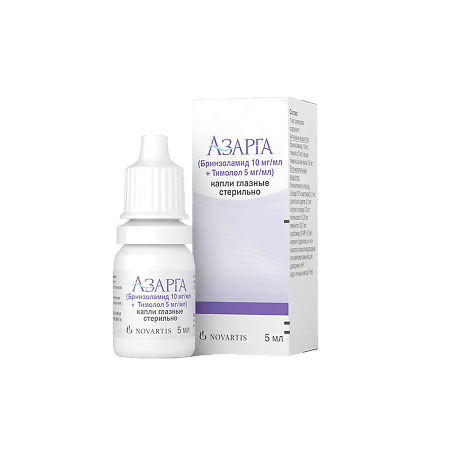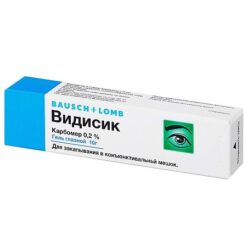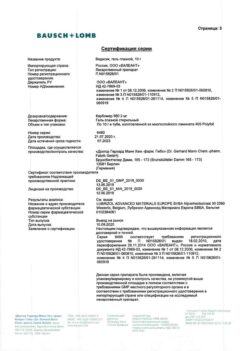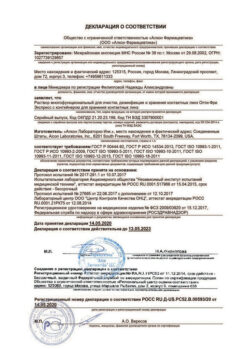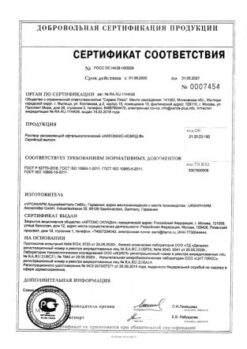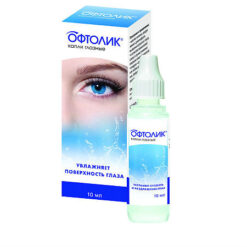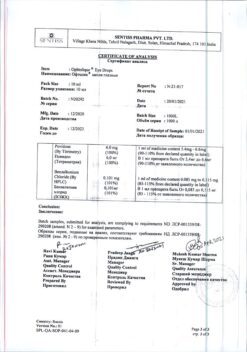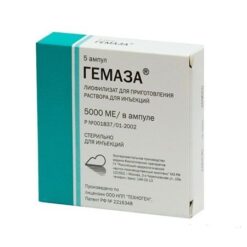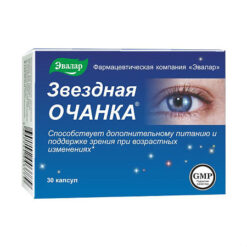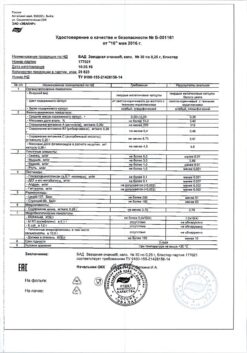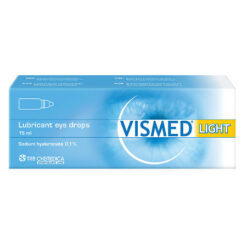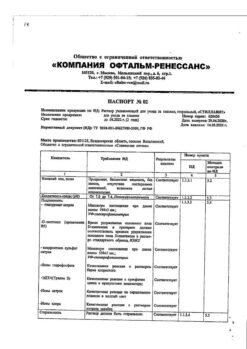No products in the cart.
Azarga, eye drops 5 ml
€32.79 €27.32
Description
Azarga eye drops contain two main active ingredients – brinzolamide and timolol. Brinzolamide helps to reduce the production of intraocular fluid in the ciliary body of the eye, which leads to a decrease in intraocular pressure.
Timolol is a beta-adrenoblocker that does not irritate the sympathetic nervous system or depress the heart muscle. When used topically, it reduces the formation of aqueous humor and slightly increases its outflow.
Brinzolamide and timolol penetrate into the systemic bloodstream when used topically. Both the substances themselves and their metabolites are eliminated mainly by the kidneys. The combined effect of the two active substances is more pronounced than when they are used separately.
Indications
Indications
Azarga eye drops are indicated for elevated intraocular pressure associated with open-angle glaucoma or intraocular hypertension when therapy with a single active ingredient has proven insufficient to permanently lower intraocular pressure.
Active ingredient
Active ingredient
Composition
Composition
1 ml of eye drops contains:
the active ingredients:
brinzolamide 10 mg,
timolol (in the form of maleate) 5 mg,
accompanies:
mannitol,
dinatrium edetate,
sodium chloride,
purified water,
benzalkonium chloride 50%,
sodium hydroxide,
tiloxapol
How to take, the dosage
How to take, the dosage
The bottle should be shaken before use.
The drug is injected 2 times a day, 1 drop into the conjunctival sac of the eye (the space between the eye and the eyelid).
Instantly after application, it is advisable to press the area below the inner corner of the eye lightly with the finger for 1-2 minutes to reduce the risk of side effects.
If a dose is missed, the next dose continues as usual. Do not put more than 1 drop in the eye 2 times a day.
If Azarga Eye Drops are prescribed instead of another anti-glaucoma drug, the drops are started the day after the previous drug is withdrawn.
Interaction
Interaction
Special Instructions
Special Instructions
In elderly patients, oral carboanhydrase inhibitors may affect the ability to engage in activities requiring increased attention or coordination. This effect should be considered when prescribing Azarga, since the drug penetrates into the systemic bloodstream when administered topically.
When using brinzolamide in patients who wear contact lenses, the condition of the cornea should be monitored because carboenhydrase inhibitors may lead to disruption of its hydration. Close monitoring of patients with corneal abnormalities, diabetes mellitus, or corneal dystrophy is recommended.
Benzalkonium chloride in Azarga may cause pitting keratopathy and/or toxic ulcerative keratopathy. Close monitoring of patients is recommended during long-term use of the drug. Benzalkonium chloride may be absorbed by contact lenses. Before using the drug the lenses should be taken off and put back on not earlier than 15 min after application of the drug.
Do not touch any surface with the tip of the dropper bottle to avoid contaminating the dropper bottle and its contents. The bottle should be closed after each use.
Impact on driving and operating machinery
After using the drug, visual acuity may decrease temporarily, and until it is restored, it is not recommended to drive and engage in activities requiring high attention.
In case of impaired renal function
The drug is contraindicated in severe renal failure (creatinine clearance less than 30 ml/min).
Use in the elderly
In elderly patients, oral carboanhydrase inhibitors may affect the ability to engage in activities requiring increased attention or coordination. This effect should be considered when prescribing Azarga because the drug penetrates into the systemic bloodstream when administered topically.
Contraindications
Contraindications
The drug is not recommended for use in bronchial asthma and other severe chronic obstructive pulmonary diseases, bronchial hyperresponsiveness, marked cardiac insufficiency, sinus bradycardia, cardiogenic shock, AV-blockade of II-III degree.
The contraindications include severe allergic rhinitis, severe renal insufficiency (creatinine clearance less than 30 ml/min), hypersensitivity to beta-adrenoblockers, sulfonamides, to the components of the drug in general or individually, also when used simultaneously with oral carboangidase inhibitors. Do not use the drug in closed-angle glaucoma.
Azarga Eye Drops is contraindicated in pregnancy, lactation and under 18 years of age.
With caution Azarga is prescribed in cases of hyperthyroidism, disturbances of central and peripheral circulation, arterial hypotension, Prinzmetal angina, diabetes mellitus, tendency to hypoglycemia, pseudoexfoliative or pigmentary glaucoma (with constant control of intraocular pressure).
In patients with a history of severe anaphylactic reactions to various allergens, as well as atopy, resistance to habitual doses of adrenaline in the treatment of anaphylactic reactions may be observed when receiving beta-adrenoblockers simultaneously.
Before elective surgery under general anesthesia, the dose of the drug is gradually reduced and withdrawn 48 hours before anesthesia is applied.
Side effects
Side effects
Local reactions: 1-10% cases – blurred vision, eye pain, eye irritation, foreign body feeling; 0.1-1% cases – corneal erosion, pitting keratitis, dry eye syndrome, eye discharge, itching in the eye, blepharitis, allergic reactions, effusion into the anterior chamber of the eye, conjunctival hyperemia, crust formation on the eyelid margins, asthenopy, feeling of discomfort in the eye, itching, eyelid erythema, allergic blepharitis.
Systemic side effects: 1-10% cases dysgeusia; 0.1-1% cases insomnia, decreased BP, chronic obstructive pulmonary disease, oropharyngeal pain, rhinorrhea, cough, hair growth disorders, flathead shingles.
Brinzolamide
Local reactions: keratitis, keratopathy, increased optic disc excavation, corneal epithelial defect, increased intraocular pressure, corneal deposits, corneal defect formation, corneal edema, conjunctivitis, meibomian gland inflammation, diplopia, photophobia, photopsia, decreased visual acuity, pterygium, dry keratoconjunctivitis, eye hypoesthesia, sclera pigmentation, subconjunctival cyst, increased lacrimation, visual disturbances, eye swelling, allergic eye reactions, mydriasis, eyelid edema.
Systemic side effects: apathy, depression, decreased libido, nightmares, nervousness, drowsiness, motor dysfunction, amnesia, memory impairment, CNS disorders.
Treatment: immediately flush eyes with water.
Symptomatic and supportive therapy. Electrolytes and blood pH should be monitored. Hemodialysis is ineffective.
Pregnancy use
Pregnancy use
Azarga is contraindicated in children under 18 years of age, pregnant women and during lactation.
Similarities
Similarities
Additional information
| Shelf life | 2 years |
|---|---|
| Conditions of storage | At 2-30 °C |
| Manufacturer | Alcon-Couvreur, Belgium |
| Medication form | eye drops |
| Brand | Alcon-Couvreur |
Related products
Buy Azarga, eye drops 5 ml with delivery to USA, UK, Europe and over 120 other countries.

